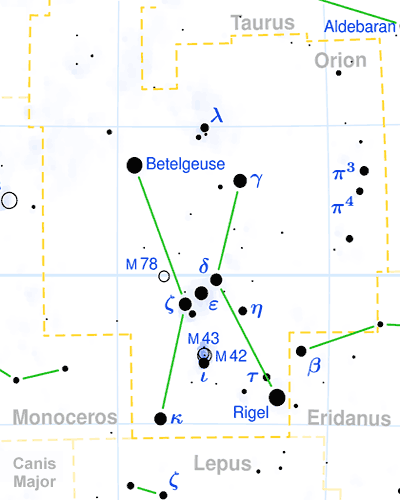The posts below cover a range of topics including advice about where to look for the prominent constellations with details of their key features to more technical posts about using telescopes and how to image – something for the beginner and for the more experienced astronomer.
Image credit : Torsten Bronger CC BY-SA3.0 Published in seasky.org

-
Top tips for photography
Top tips to improve your viewing and astrophotography John Axtell is an experienced astrophotographer with his CV including writing for the Sky at Night magazine and running nearby Astronomy groups.…
-
Adding Comets to Stellarium
Comets are often in our skies and can be hard to spot unless they brighten. Stellarium is a very useful tool to find out where and when to look for…
-
Update on an 11 year image!
Back in September 2011 one of our former members Chris Thayer, caught an image of a super nova in M101. In November 2022 at a talk given by Mark Sullivan…
-
Delta Cephei
Steve Baker wrote a very interesting piece about Delta Cephei in a recent newsletter. I have copied this here and added a bit more information about how to observe it.…
-
Atmospheric colour dispersion
Lunar images, atmospheric colour dispersion and comparison of telescope configurations I don’t often look at or image the Moon through a telescope, but I decided to do that for a…
-
Summer Observing
The long Summer evenings don’t necessarily mean that observing and imaging are out of the question. The Moon is still an easy and sometimes overlooked target and yet our natural satellite is…
-
In praise of small telescopes
Big isn’t always best – in praise of small telescopes Our Stargazing Live events are always wonderful and our one in January 2014 was probably the best yet because the…
-
Galaxy viewing
The Wow factor of galaxy viewing I only have a small telescope and it has given me lots of wow moments – looking at Jupiter and its moons, seeing the…
-
Jupiter and its moons
Jupiter and its moons – an ideal target for beginners Got a new telescope and not sure what to do with it ? Congratulations! An ideal starter for you is…
-
Star charts
Getting to grips with star charts: by a novice for novices Venus and Jupiter are unmissable and unforgettable sights in the night sky when they are in the right part…
-
Fireball class meteor photographed over Surrey
IAbout 9.30 on Saturday 3 March 2012 I went oout to try and capture an image of comet Garradd with my DSLR. At mag 6.8 it is in range of…
-
WebCam Imaging
WebCam Imaging MasterClass I’ve dabbled with webcam imaging before, but hitherto I’ve only achieved mediochre results – seeing perhaps a couple of cloud belts on Jupiter, some suggestion of a red spot, the…
-
Double Double star
A nice Double- Double star system to observe is Epsilon Lyrae, very close to Vega (one of the stars of the summer triangle) Image credit : Torsten Bronger CC BY-SA…
-
Teaching resources and practical exercises
Farnham Astronomical Society has compiled a set of practical exercises to raise awareness and interest in Astronomy, the night sky and topical issues such as light pollution. These resources aim…
-
Dark Adaptation
We all know it takes time for the eyes to adapt to the dark, but have you ever wondered why? It is all down to the chemical process that occur…
-
The Magnitude Scale
Even with the unaided eye we can make some estimates of the properties of a star against the dark background of the night sky. Perhaps the most obvious observation we…
-
Viewing coloured nebulae
Why can’t I see fabulous coloured nebulae with my telescope? We are all used to seeing fabulous, colourful images from space, taken by the Hubble Space Telescope or from some of…
-
Variable Stars: U Orionis
U Orionis Observing Notes 2007-2009 The British Astronomical Association made U Orionis, a long-period variable or “Mira” star, its variable star of year for 2008. This star varies over a…
-
Variable Stars: VW Cephei
VW Cep Observing Notes 2007-2008 W Ursa Majoris Stars are contact eclipsing binaries with very short periods (fractions of a day), and because they are so close together the stars…
-
Variable Stars: Rho Cas
Rho Cas Observing Notes 2007-2009 For about 2 years I observed the Semi-regular variable star Rho Cassiopeia. Semi-regular variables have a rough period and rough range, but both these can…
